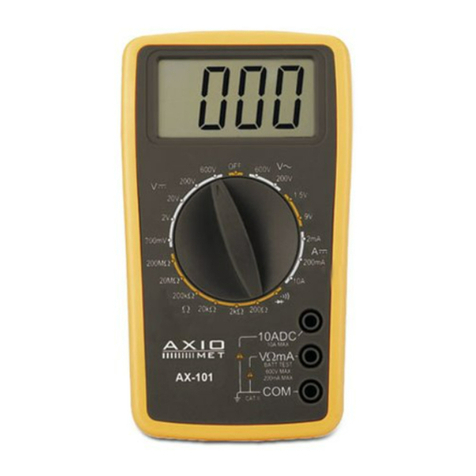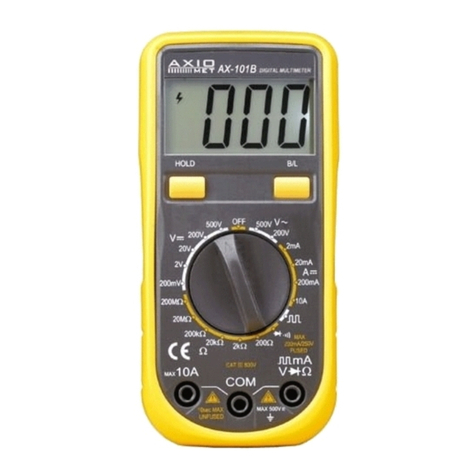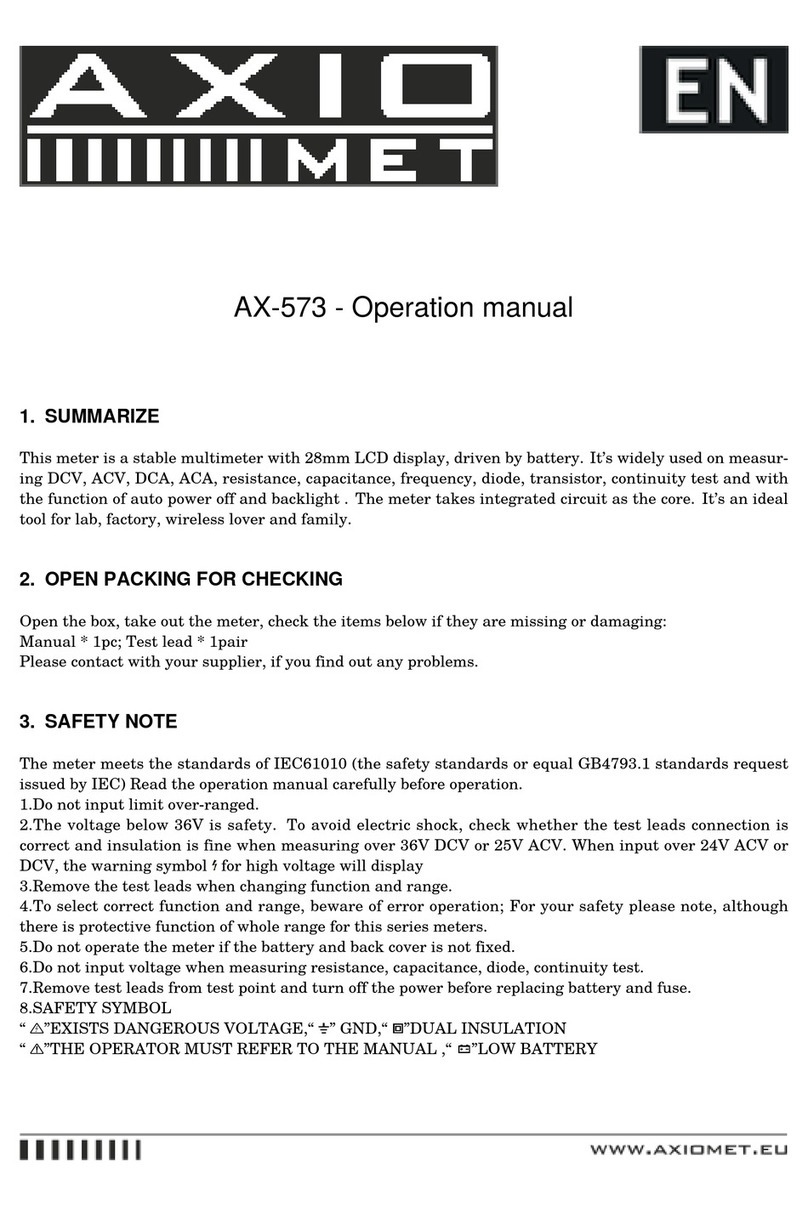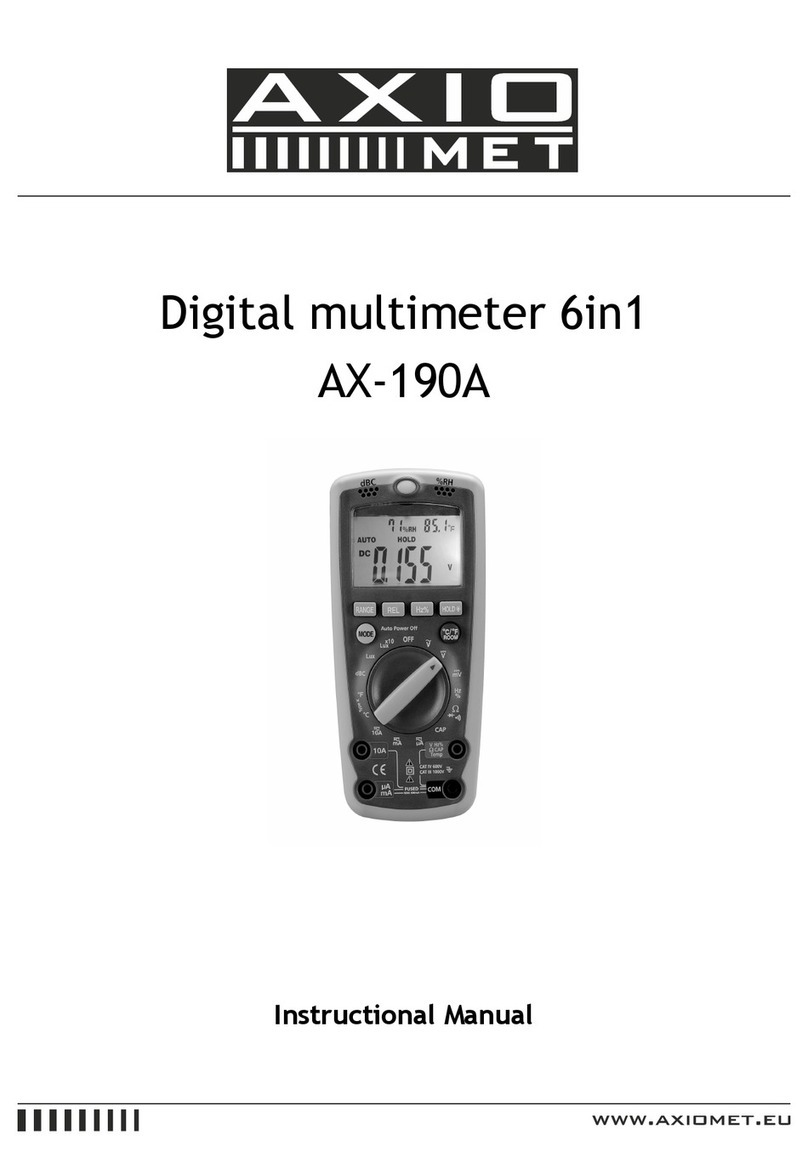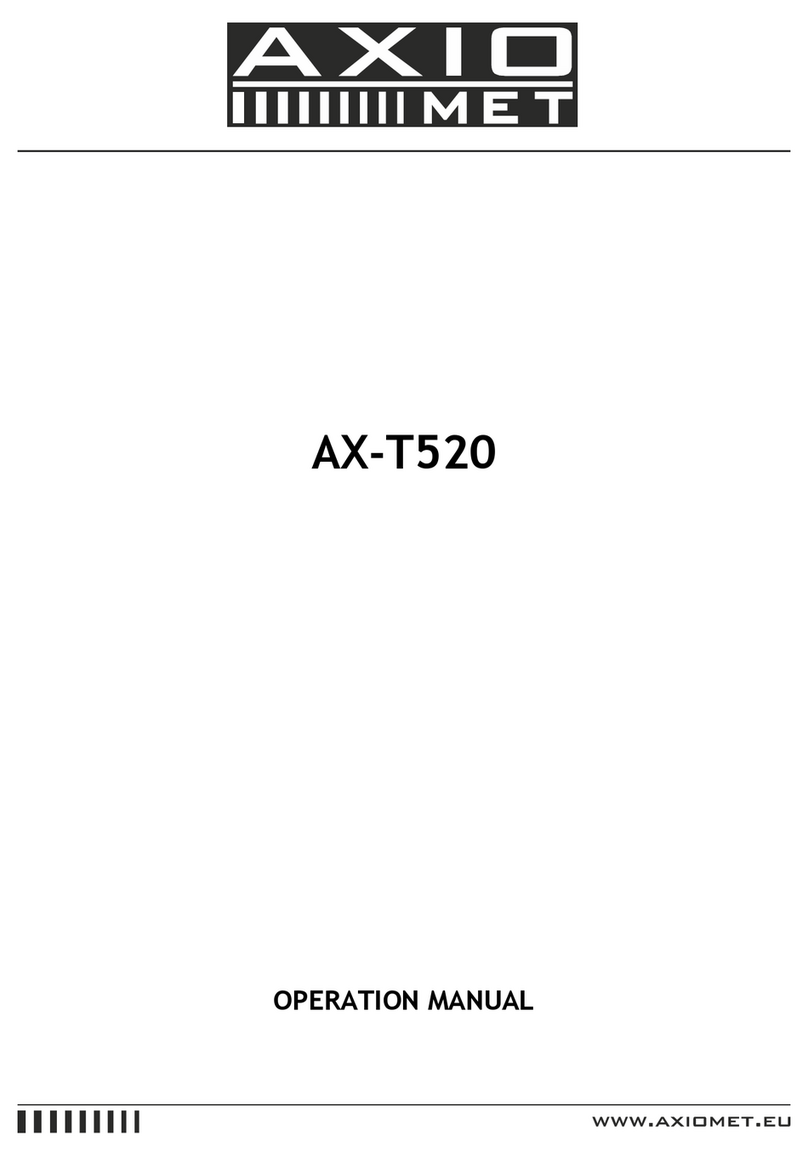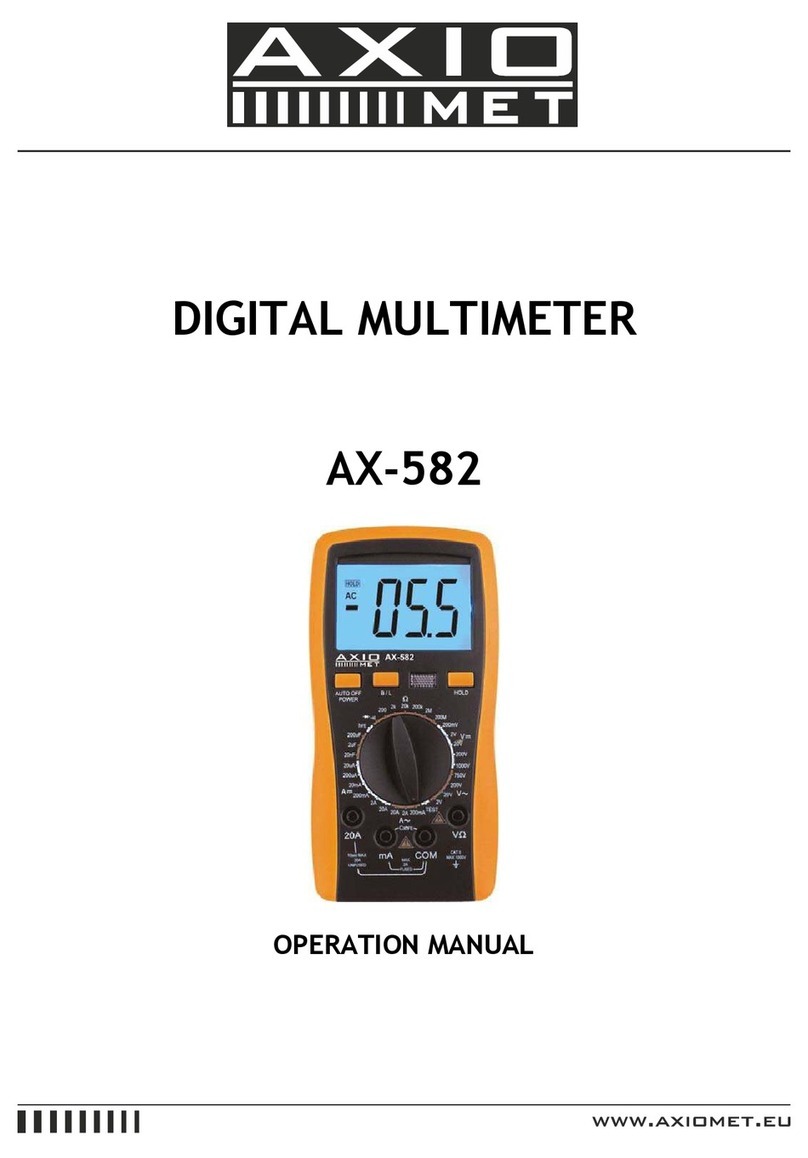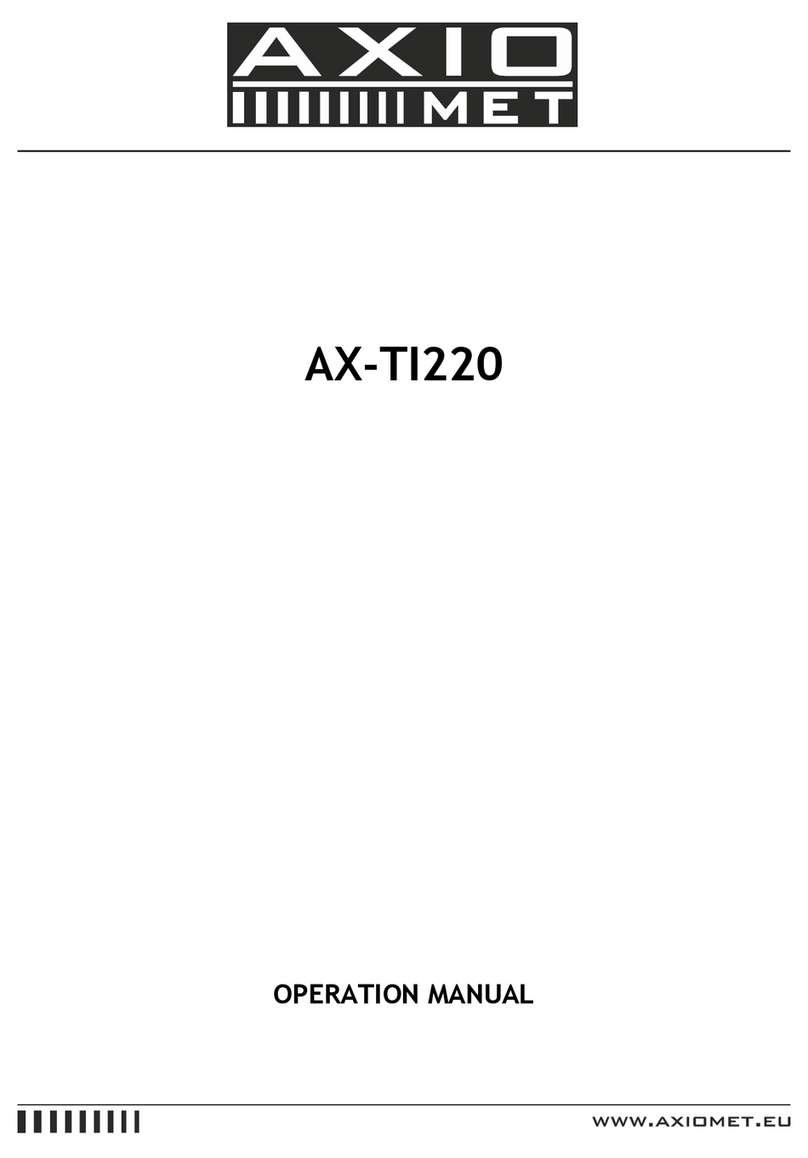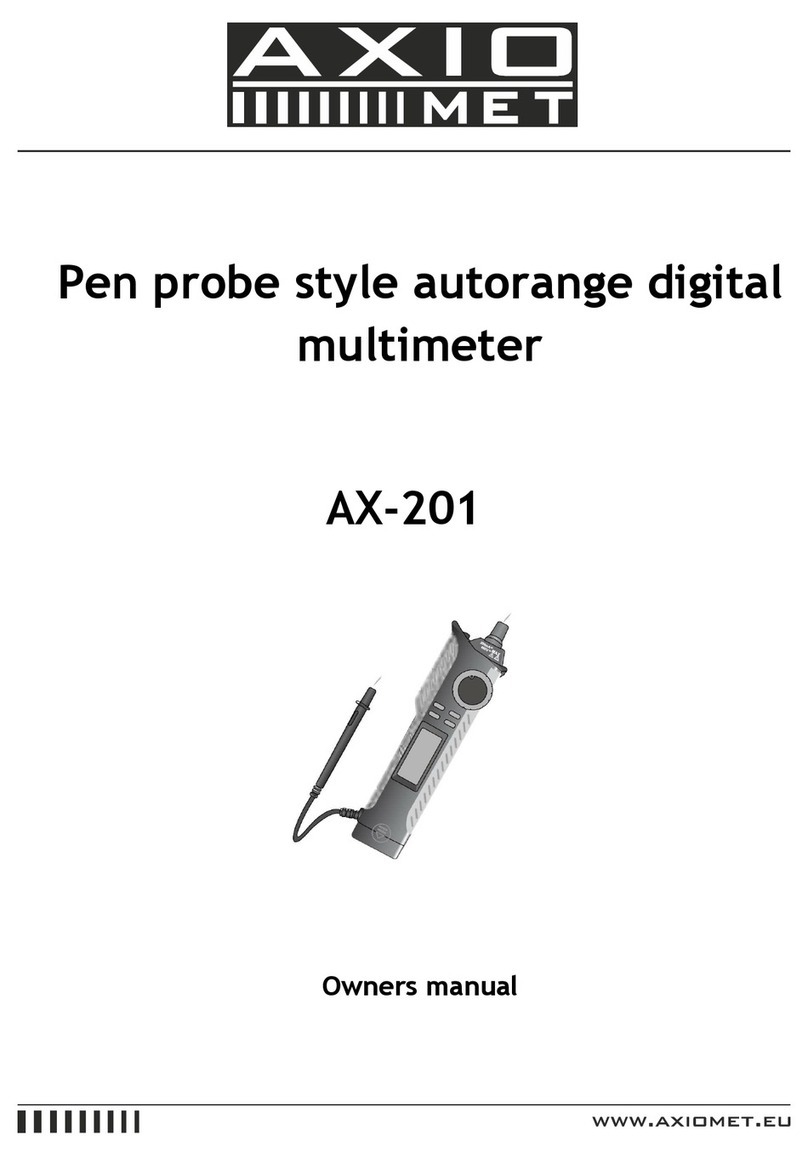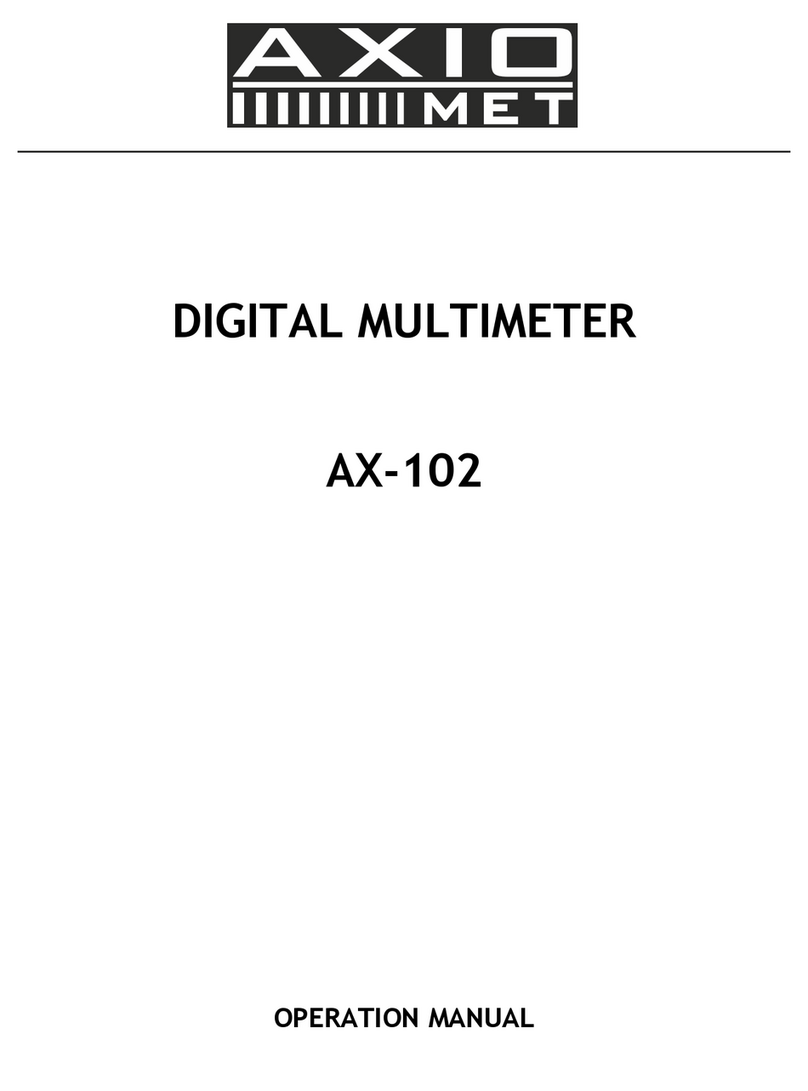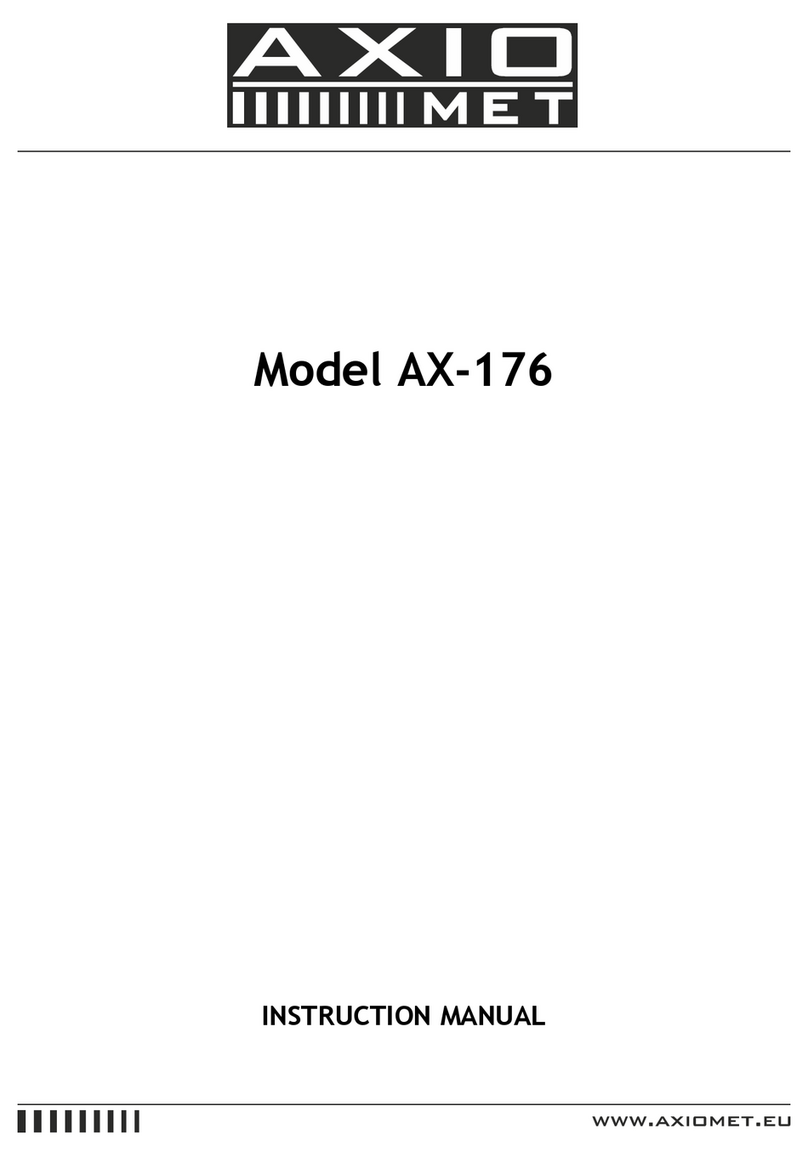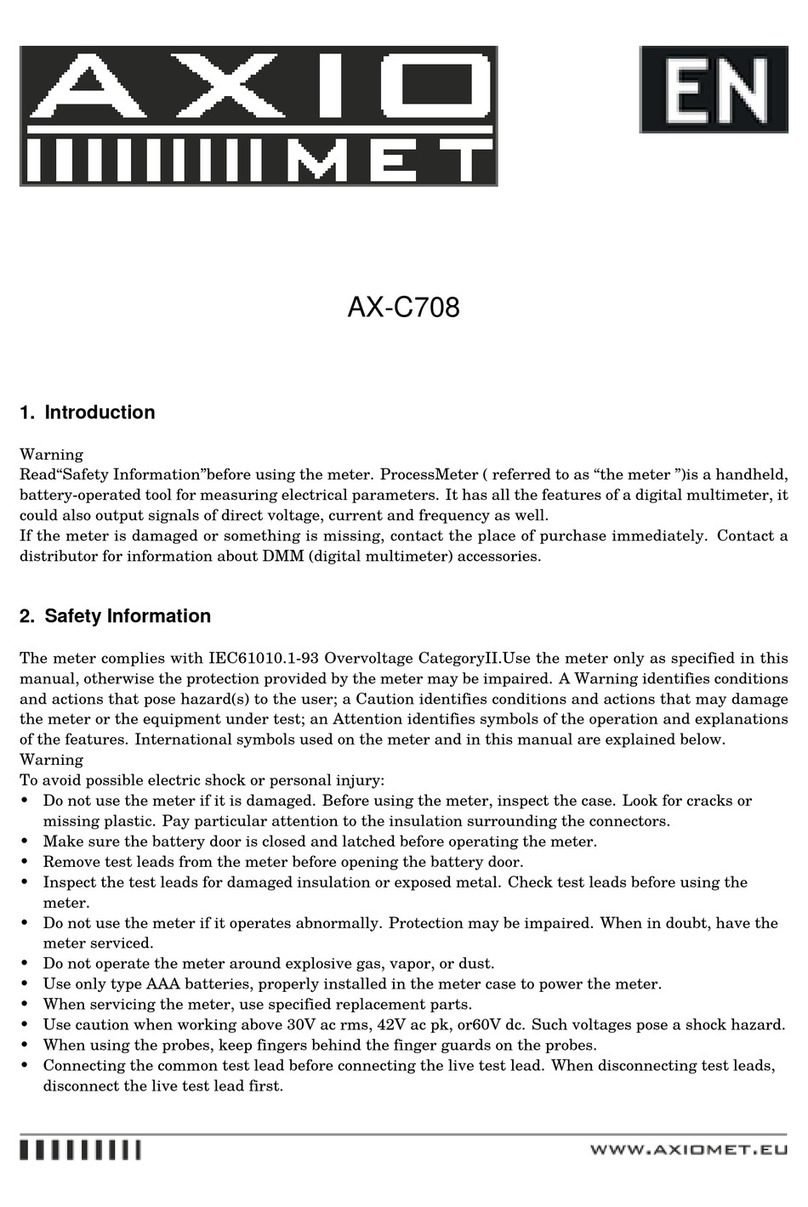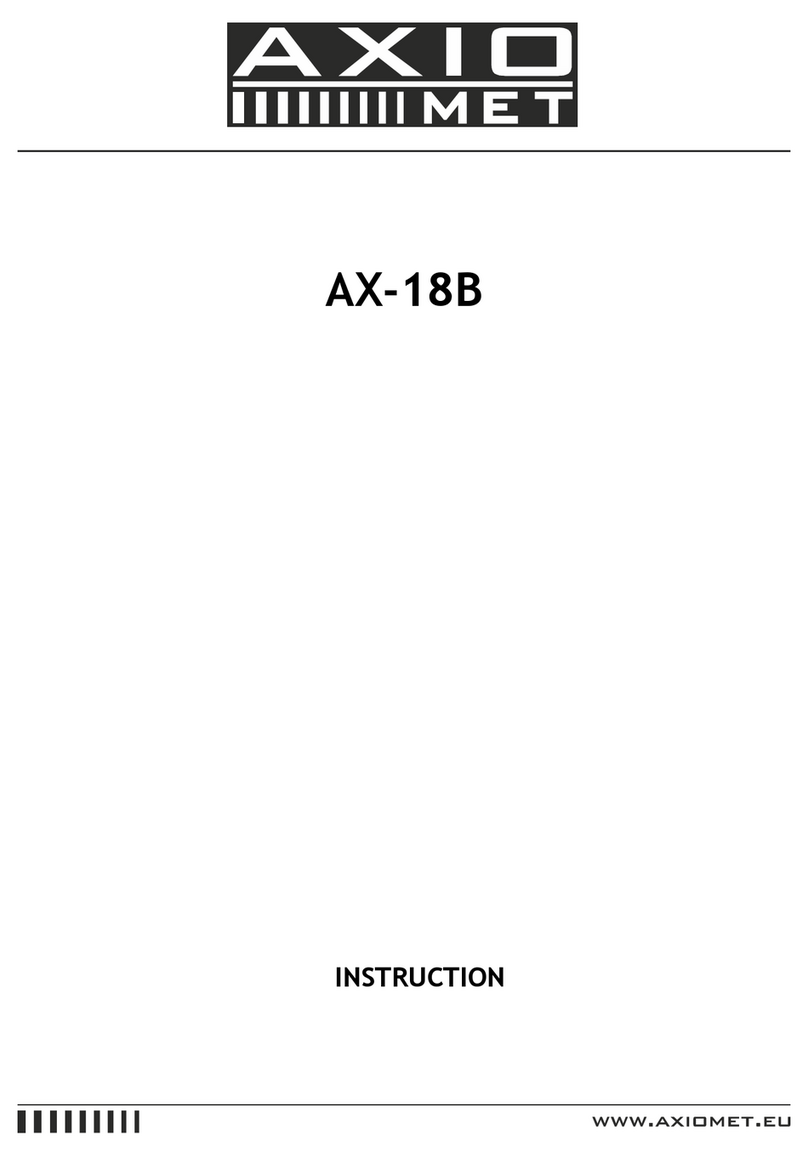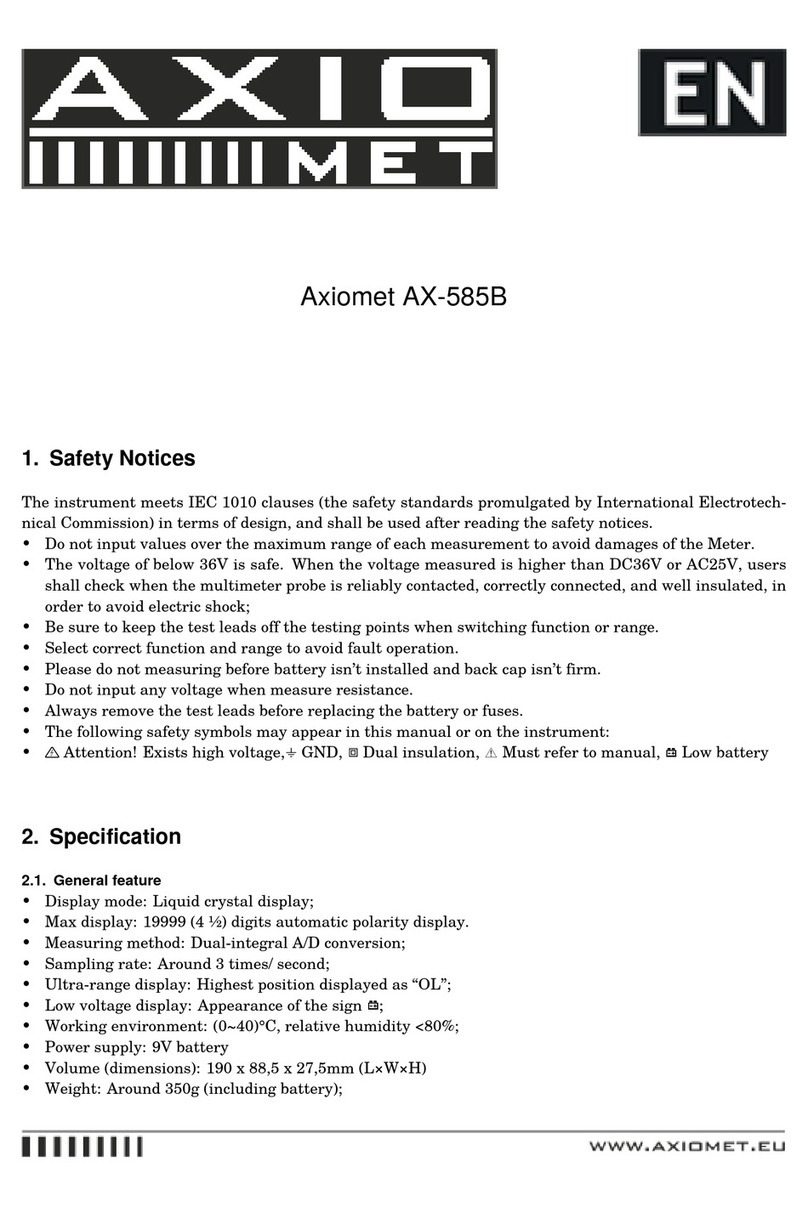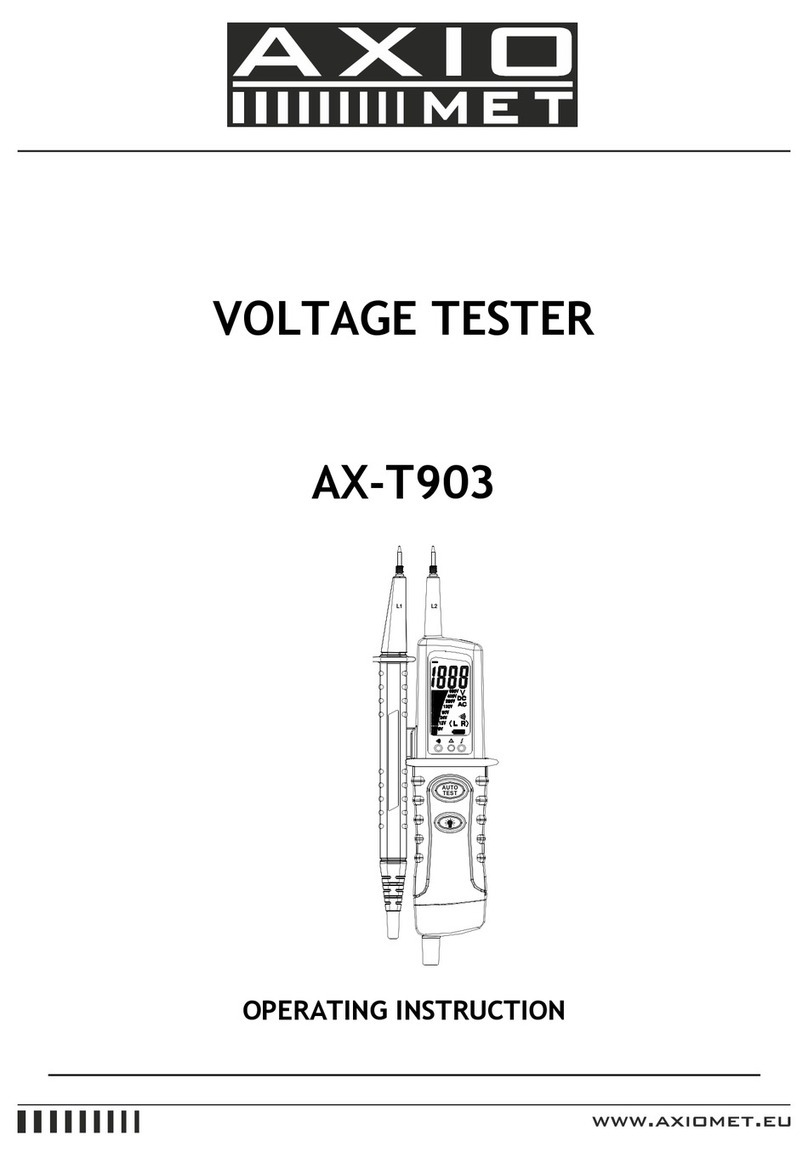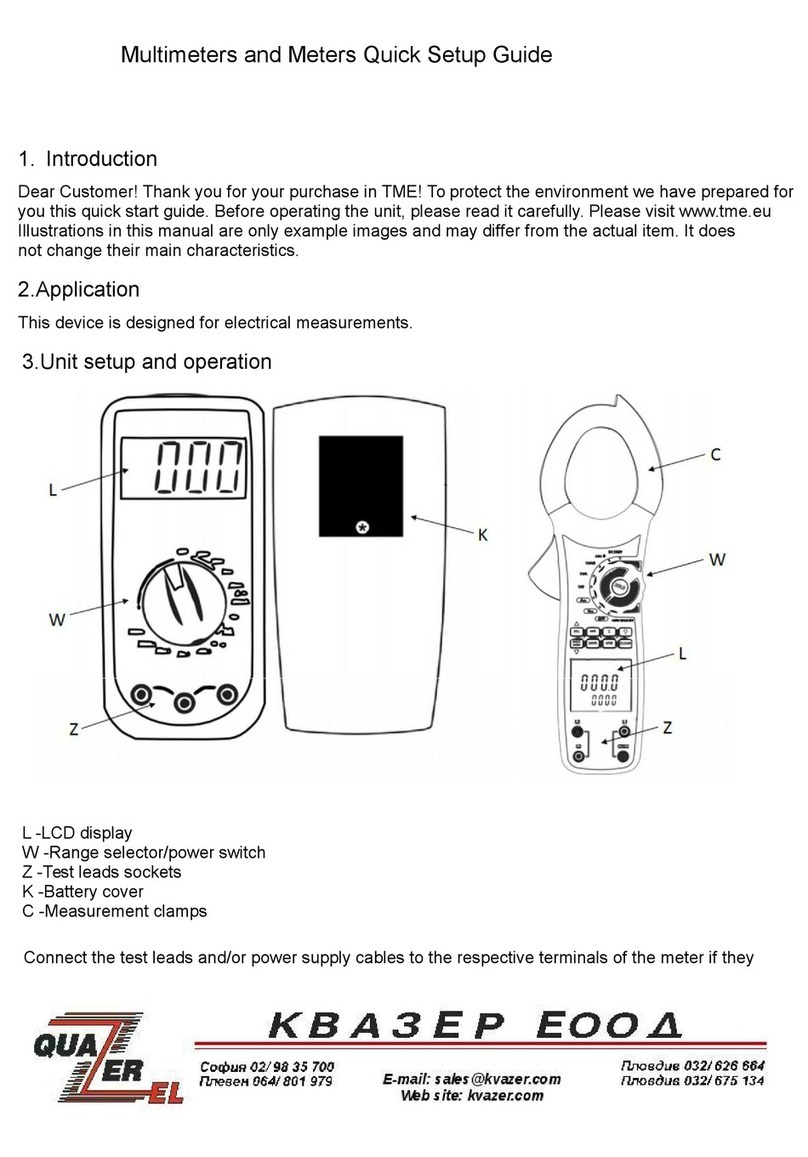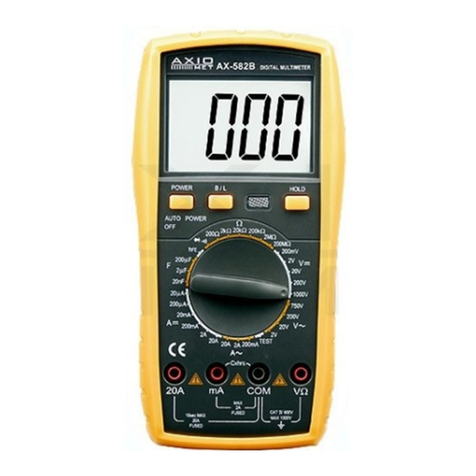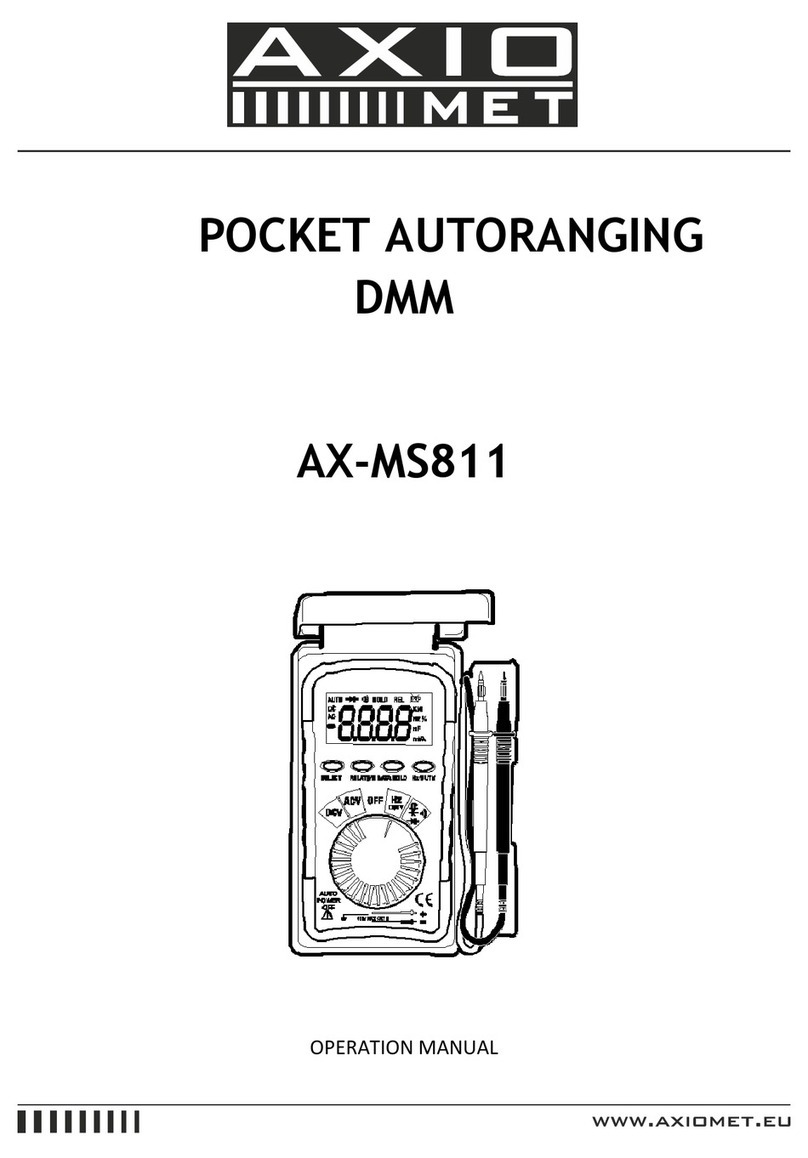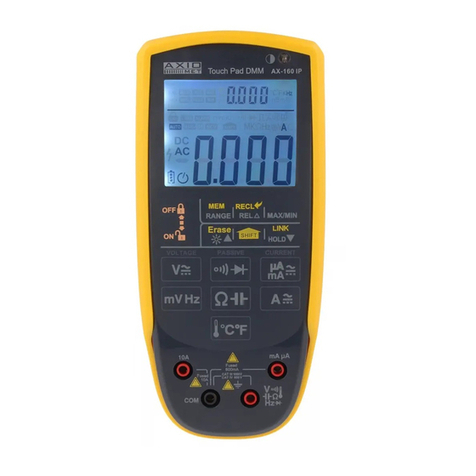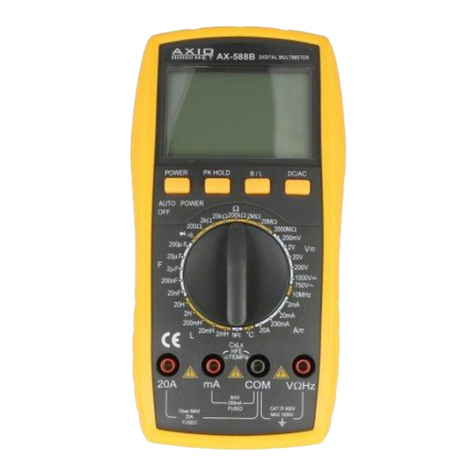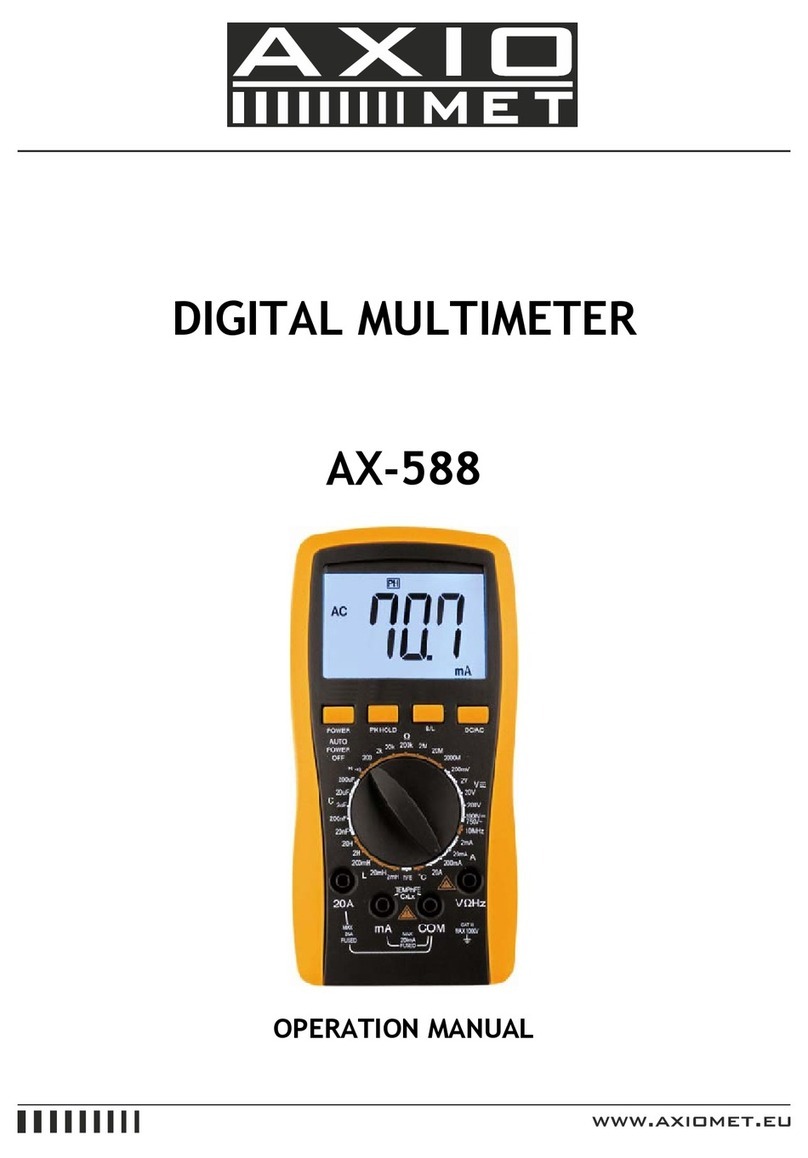4) Touch the test probe tips to the circuit or wire you wish to check, the max. value of resistance under
check will be showed in display, if the resistance is less than 70Ω±30Ω, the audible signal will sound.
NOTE:
� In a circuit, a good diode should produce a forward bias reading of voltage, however, the reverse-bias
reading can be variable based on resistance of other pathways between the probe tips.
� To avoid electric shock, never measure continuity on circuits of wires that with voltage.
6.4. Resistance Measurement
WARNING:
To avoid electric shock, disconnect power to the unit under test and discharge all capacitors before taking
any resistance measurements. Remove the batteries and unplug the line cords.
1) Set the rotary switch to the desired resistance range.
2) Insert the black test lead banana plug into the negative COM jack, insert the red test lead banana plug
into the positive V ΩmA jack.
3) Touch the test probe tips across the circuit or part under test. It is best to disconnect one side of the
part under test so the rest of the circuit will not interfere with the resistance reading.
4) Read the resistance in the LCD display
NOTE:
� The measured value of a resistor in a circuit usually is different from the rated value of resistor, it because
the test current of the meter flows through all possible paths between the probe tips.
� In order to ensure the best accuracy in measurement of low resistance, short the test leads before the
measurement and subtract this resistance value of the test leads.
� For high resistance measurement, the meter may take a few seconds to stabilize the readings.
� In the open circuit, the meter display OL to indicate the over range
6.5. Temperature Measurement
WARNING:
To avoid electrical shock, do not perform temperature measurement when the input the voltage exceed
36V DC or 36V ACRMS.
1) Set the rotary switch to ℃°F position, LCD displays values of environmental of temperature.
2) Insert the temperature probe into the input jack, insert red plug of thermo probe into Ω℃°F jack,
black plug of thermo probe into COM jack, making sure to observe the correct polarity.
3) Touch the temperature probe head to the part whose temperature you wish to measure, keep the probe
touching the part under test until the reading stabilizes.
